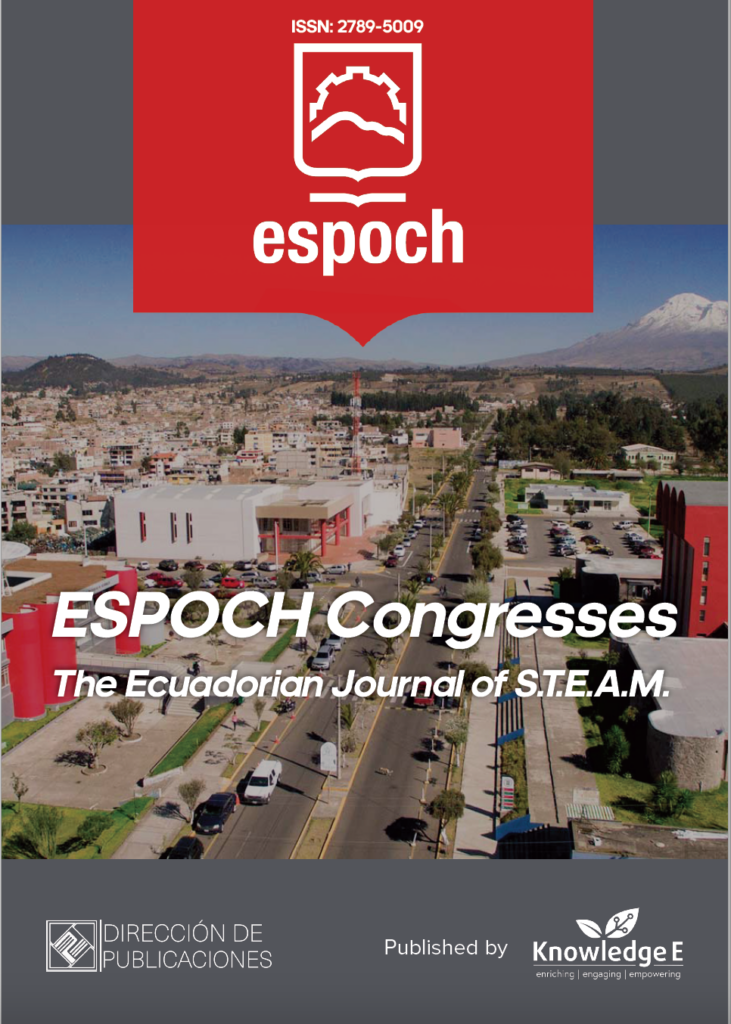
ESPOCH Congresses: The Ecuadorian Journal of S.T.E.A.M.
ISSN: 2789-5009
Leading Ecuadorian research in science, technology, engineering, arts, and mathematics.
Design and Implementation of the Electric Propulsion Train of a Prototype for the Eco Shell Marathon Competition
Published date:Aug 26 2021
Journal Title: ESPOCH Congresses: The Ecuadorian Journal of S.T.E.A.M.
Issue title: Volume 1, Issue 1
Pages:267 - 282
Authors:
Abstract:
The main objective of this thesis project focused on designing and implementing an electric propulsion train for a vehicle prototype and subsequently achieving an adequate driving technique, where man and machine come together to achieve an efficient participation in the Eco Shell Marathon competition. In this context, the methodology sought to identify needs such as: equipment and driving strategies. Therefore, for the equipment selection, the technique of the ordinal method corrected of weighted criteria was applied, resulting in: a Brushed Speed WPHMOTO 48v 1000w motor with a score of percent; A TDPRO YK31C Accelerator Driver with a 40 percent priority, and Turnigy Graphene Panther Batteries (6000mAh, 6S 75C Lipo with XT90) with a 44 percent priority, from three possible options for each of them. After the equipment implementation, experimental trials of four types of practices were carried out. In the analysis of the results when contrasting the first two practices carried out on the sloping track zero degrees, it is revealed that in Test 01 the vehicle travels 35.056 km per kW.h, while in Test 02 the distance is 37.466 km per each kW.h. In the case of Test 03 and 04 performed on the track with an inclination of two degrees, the coefficients of the relationship between distance traveled and energy consumed are: 34.29 km/kWh and 42.219 km/kW.h respectively. Therefore, the relationship between the distance traveled and energy consumed present favorable data when applying the driving strategy based on giving impulses through the accelerator as the speed of the two types of tracks decreases.
Keywords: technology and engineering sciences, electric vehicle, electric propulsion train, energy efficiency, energy management, energy efficient race, lithium ion batteries.
Resumen
En este presente proyecto de tesis el objetivo principal se fundamentó en diseñar e implementar un tren de propulsión eléctrico para un prototipo de vehículo y posteriormente conseguir una técnica adecuada de conducción, donde hombre y maquina se junten para lograr una participación eficiente en la competencia Eco Shell Marathon. Bajo este contexto la metodología se regio al reconocimiento de necesidades como: equipos y estrategias de conducción. Por tanto, para la selección de equipos se aplicó la técnica de método ordinal corregido de criterios ponderados, dando como resultados: un motor Brushed Speed WPHMOTO 48v 1000w, con una puntuación de treinta y seis por ciento; Un Driver Acelerador TDPRO YK31C, con una prioridad de cuarenta por ciento y Baterías Turnigy Graphene Panther (6000mAh, 6S 75C Lipo con XT90), con una prioridad de cuarenta y cuatro por ciento, de tres posibles opciones para cada uno de ellos. Posterior a la implementación de equipos, se procede a las practicas experimentales de cuatro tipos de ensayos. En cuyo análisis de resultados al contrastar los dos primeros ensayos realizados sobre la pista inclinada cero grados, revela que el Ensayo 01 el vehículo recorre 35,056 km por cada kW.h, mientras que en el Ensayo 02 el recorrido es de 37,466 km por cada kW.h. Para el caso del Ensayo 03 y 04, realizados sobre la pista con una inclinación de dos grados, los coeficientes de la relación entre distancia recorrida y energía consumida son: 34,279 km/kW.h y 42,219 km/kW.h respectivamente. En tal virtud la relación distancia recorrida y energía consumida presenta datos favorables al aplicar la estrategia de conducción basada en dar impulsos mediante el acelerador al disminuir la velocidad en los dos tipos de pistas.
Palabras clave: vehículo eléctrico, tren de propulsión eléctrico, eficiencia energética, baterías de iones de Litio.
References:
[1] Brushless. 2016. http://motores.nichese.com/brushless.htm.
[2] Carreño E et al. Diseño y fabricación de un vehículo autónomo impulsado por energía solar. Dialnet. 2016. Available from: https://dialnet.unirioja.es/servlet/articulo?codigo =3957091.
[3] Cebrian J. Mecánica y Entretenimiento Simple del Automóvil. Madrid: Ministerio Del Interior; 2016.
[4] Cuesta G. 2017. UPCommons. 2017 September 23. Available from: https://upcommons.upc.edu/handle/2117/108997 ?show=full.
[5] Honda small engines. Honda. 2019. https://engines.honda.com/models/modeldetail/mini-4.
[6] Ibañez. Xataka. 2017 July 31. Available from: https://www.xataka.com/automovil/estosera-lo-proximo-en-baterias-para- cocheselectricos-mas-de-650-km-de-autonomia-real.
[7] Iglesias R et al. Scribd. 2019. Available from: https://es.scribd.com/document/266674134/Mod elado-y-Simulacion-de-Una- Bateria-de-IonLitio-Comercial-Multicelda-1.
[8] Izrurzun R, Garcia F. Los Coches Eléctricos. El Ecologista, 2015;21.
[9] Kim. Contaminación del aire ambiental. Paho. 2017. https://www.paho.org/hq/index.php?option=com _content&view=article&id=12918:ambient-airpollution&Itemid=72243&lang=es.
[10] Nieto A. Elementos de máquina. 2017.
[11] Quenaya E. 2018. Impacto de la contaminación del aire por el parque automotor en la población del área urbana de Arequipa 2016 – 2017. Repositorio. 2018. http://repositorio.unsa.edu.pe/handle/UNSA/796
[12] Rosero D, Lopez, E. Repositorio universidad técnica de ambato. 2018. http://repositorio.uta.edu.ec/jspui/handle/123456 789/27922.
[13] Shell. Shell Global. 2019. https://www.shell.com/make-the- future/shellecomarathon.html.
[14] Turnigy Graphene Panther. Baterias turnigy. 2019. [En línea] 2019. Available from: https://hobbyking.com/en_us/turnigy-graphene6000mah-6s-75c-lipo-pack-w- xt90.html .
[15] Ugaulde H. 2015. Diseño de tren motriz para vehículo de competición en Shell Eco Marathon Americas. [En línea] 2015. [Citado el: 15 de Octubre de 2019.] http://132.248.52.100:8080/xmlui/handle/132.24 8.52.100/5991.